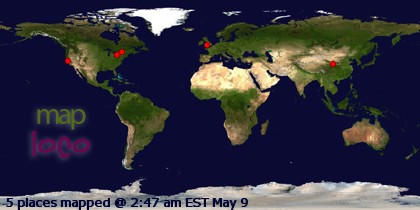We started the first day trying to improve our balance during nukitsuke and kirioroshi by swapping our legs out during the furikaburi. I found this very useful as it forced one to slow down the furikaburi in order to fit the leg movement in...and this is where things go wrong.
Furikaburi is quite a tricky action in Seitei. It is described in the following sequence:
With a feeling of thrusting behind one's left ear, lift the kissaki up in a parrying action ensuring that the kissaki does not drop below horizontal.
Sounds easy doesn't it? And yet there are a few more conditions which have to be considered and are taught orally:
- The right hand must not cross the centreline. It may join with the centreline on the sword's ascent to above the head but the hand and arm must not obscure the vision of the exponent.
- The sword therefore must pass in front of the exponent to execute the guarding/parrying action of the furikaburi.
- The sword must cut at the apex of the movement.
- The apex is defined by the tsukagashira being above the hairline.


What is a bit more obvious to see from the diagrams is that:
a) The right hand remains quite static in it's position throughout a lot of angular movement of the sword.
b) This movement should be done keeping the edge of the sword pointed at the opponent.
c) The upward inclination of the sword is gradual and once it is started, the sword does not disincline again (i.e. the upward angle of the sword is maintained).
Many people (myself included when I am not concentrating do a number of the following things:
a) Bring the sword across the body and let the edge drop.
b) Bring the kissaki and tsubamoto straight up onto the centreline in too steep an angle.
It's a bit difficult to write about these things but very easy to see them. I urged the people at the seminar to slow down and make sure this movement was correct especially checking that the sword was thrusting past the left ear.
 The image shown of Ishido Sensei is actually him doing furikaburi (check out the left hand). You can see how flat the sword is while the right hand is hardly moving.
The image shown of Ishido Sensei is actually him doing furikaburi (check out the left hand). You can see how flat the sword is while the right hand is hardly moving.The rest of the day was spent going through seitei. One bit of advice which I gave the others which I intend to use more for myself was to stop using all forms of power. This only has the effect of making the kata "lumpy" but by trying not to use power then it created something of a "tabula rasa" or I like to think of it as a clean workbench to work from. From there one can start to add contrasts of feeling, timing, speed and power but one first has to ensure that one's technique is pretty much correct first. With training this should be easy to achieve once one stops trying to throttle their sword.
I'm just trying to remember the points that me or Martin made, here are some of them:
- That at the moment that nukitsuke is made, the hips must be moving forwards. This is combined with the upper body twisting into the cut.
- That the feet should remain apart during iaigoshi.
- The importance of driving the body forwards with the foot doing fumikomi in Ushiro.
- The importance of not crabbing sideways during furikaburi on Ushiro (so easy to do).
- Ukenagashi remaining relatively contained.
- Using the hips to make the thrust on Tsukaate.
- Securing the feet well to make the static kirioroshi on Tsukaate.
- Getting the timing of the sword and front foot synchronised on Kesagiri.
- Softening the hands during chiburi of Kesagiri.
- Making a large draw using the tsukashira as the pivot on Morotezuki.
- Ensuring the feet don't come too close together before the thrust on Morotezuki.
- How to make the very subtle distinction of hikinuki and ukenagashi ni furikaburi on Morotezuki (i.e. don't lose sleep about it).
- Using the body and large cutting action on Sanpogiri.
- The importance of changing ones position related to the centreline on Ganmenate.
- How to change and select your own timing on Ganmenate including making contrasts of timing and speed.
- Making a direct draw on Soetezuki.
- Getting the movement active to make the thrust on Soetezuki.
- How to avoid rediculous positions of chiburi on Soetezuki while still following the ZNKR seitei directive.
- Contrasting the distance and timing of each cut on Shihogiri.
- Letting the caterpiller reverse into the marshmallow a.k.a. assuming gedan no kamae
- Creating seme at the end of each cut of Sogiri but keeping the cuts soft so that the successive cut is easy to initiate (and must be visibly so).
- Filling the time available in Nukiuchi and making full proper movements.
Anyway, a great weekend (for all I hope) and a good chance for me to draw seitei points to my own attention for training (tonight).
TTFN








